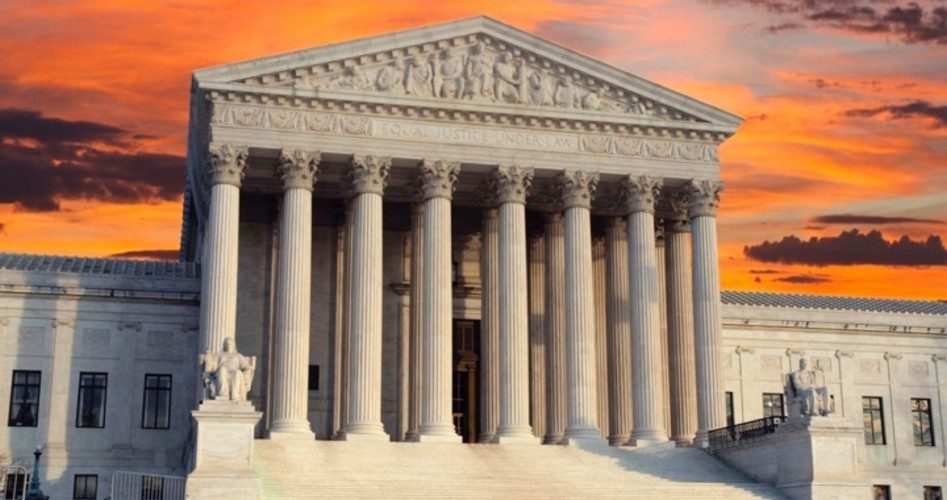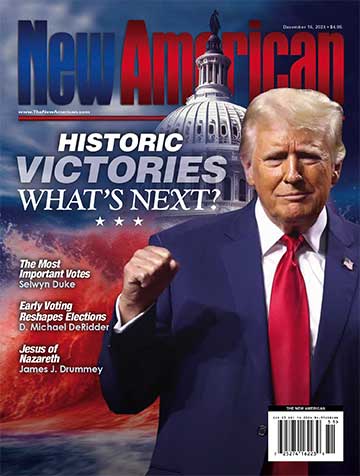
The U.S. Supreme Court has decided not to hear an appeal from three young men who, as California high school students in 2010, were ordered by school officials to remove their U.S. flag T-shirts on a day celebrating a Mexican holiday.
NBC News reports, “The justices met Friday behind closed doors to decide whether to hear the case…. But a decision to not take the case was quietly posted Monday.”
“It’s unjust, it’s discretionary, it’s politicized,” Robert Joseph Muise, the plaintiff’s lead counsel for the conservative American Freedom Law Center, told NBC Bay Area Monday morning. “The 9th Circuit set a horrible precedent. Why? I don’t know and they won’t tell me.”
{modulepos inner_text_ad}
The three students — Daniel Galli, Matt Dariano, and Dominic Maciel — appeared at Live Oak High School at the Morgan Hill Unified School District on May 5, 2010 wearing T-shirts adorned with the American flag. Assistant Principal Miguel Rodriguez asked the students to either remove their shirts or turn them inside out. When the students refused to comply, Rodriguez ordered them to Principal Nick Boden’s office. After discussing the subject with the students for well over an hour, the principal sent them home for the day.
Claiming an infringement on their constitutionally protected rights, the students and their families filed a lawsuit, wherein they accused officials of violating rights protected by the First and Fourteenth Amendments as well as the standard set by the Supreme Court in 1969, which declared that students had the right to wear black armbands to class in silent protest against the Vietnam War. That ruling affirmed that schools could not suppress student expression simply because it might cause disruption.
The Rutherford Institute and the Thomas More Law Center teamed up to represent the students and their families.
“This is nothing more than political correctness,” declared John Whitehead, president of Rutherford. “If these kinds of decisions are upheld, they will destroy our First Amendment rights.”
But in 2011, U.S. District Judge James Ware of San Francisco ruled that the school was well within its rights to make the students hide the U.S. flags on their T-shirts. He indicated that though the Supreme Court has ruled that students may engage in non-disruptive free speech, the ruling does not require that school officials wait until disruption occurs before they act. He claimed that post-1969 rulings by federal courts have typically deferred to the conclusions made by school officials, and ultimately dismissed the lawsuit filed by the students.
Becker said he would appeal the ruling, telling the San Francisco Chronicle, “The court found that the rights of students promoting their Mexican heritage trumped the rights of students expressing their [American] patriotism.” He noted that if the school was in fact concerned over safety, it should have cancelled all observance of Cinco de Mayo and not simply singled out the students wearing U.S. flag T-shirts.
In a February 2014 ruling, the San Francisco-based 9th U.S. Circuit Court of Appeals said officials did not violate the U.S. Constitution’s First Amendment, which guarantees freedom of speech. School officials acted out of legitimate concerns of violence when they sent a handful of students home for refusing to change their American flag-embellished apparel, the court said.
“Our role is not to second-guess the decision to have a Cinco de Mayo celebration or the precautions put in place to avoid violence,” Judge M. Margaret McKeown wrote for the three-member panel of judges from the 9th Circuit. The past events “made it reasonable for school officials to proceed as though the threat of a potentially violent disturbance was real,” she added.
The students in the case were supported by prominent First Amendment advocates, both liberal and conservative. They included UCLA law professor Eugene Volokh, UC Irvine School of Law Dean Erwin Chemerinsky, and Chapman University law professor John Eastman.
According to Eugene Volokh, professor of free speech law, criminal law, tort law, religious freedom law, and church-state relations law at UCLA School of Law, the school’s reaction to the students who wore the T-shirts sets a troubling precedent:
When we’re at the point that students can’t safely display the American flag in an American school, because of a fear that other students will attack them for it on May 5 or on any other day and the school feels unable to prevent such attacks (by punishing the threateners and the attackers, and by teaching students tolerance for other students’ speech), something is badly wrong.
“This is a real statement that above all, everything that happens on a school campus, the administrators have to consider student safety as their number one priority,” superintendent Steve Betando told KPIX 5.
According to the Los Angeles Times, there had been at least 30 fights between white and Mexican students at Live Oak High School, and the celebration of Cinco de Mayo had “heightened the tension,” which brings up the question, why did the school elect to engage in the celebration of a holiday that creates such tensions?
Kendall Jones, stepfather of one of the boys who sued the school district, says because the school chose to have a special day for a certain group, “it fomented an ‘us-versus-them’ mentality.”
“I found it shocking. The flag represents the nation as a whole. It is about respect for the United States,” said Jones. “We can embrace a multicultural celebration at school, but that is no excuse for excluding the flag.”
Becker, who sued on behalf of the parents, called the court’s decision a victory for “bullies” and a defeat for free speech. “This opens the door for a school to suppress any viewpoints that are opposed by a band of vocal and violent bullies,” he said.
In an earlier online article for The New American, Selwyn Duke shed some light on whether this case is indeed even about the freedom of speech. He observed,
While there’s good reason to lament the school’s anti-American — and some would say treasonous — spirit, there’s also cause to take issue with the courts’ rulings. This doesn’t mean what you think.
The reality is that minors do not have free-speech rights within schools.
After all, a student can be punished if he curses out a teacher or other pupils, insists on speaking out of turn, or spouts disruptive rhetoric. … And while courts have ruled (many would say incorrectly) that symbolism is protected under the First Amendment, students may not sport certain vulgar images that would be allowed on the street.
The courts have acknowledged the above, by the way, which is why they set limits on student speech — just as parents and teachers would. The difference is that the courts want to pretend it’s a First Amendment issue so that they can seize this power from the people — who could otherwise influence this matter via elected school boards — and become the arbiters of what student speech is allowable and have a hand in molding the young.
It isn’t just speech, either, as there’s a host of adult rights and privileges not afforded to minors. They may not vote, buy cigarettes or alcohol, drive cars, join the military, or enter into contracts, just to name a handful.




